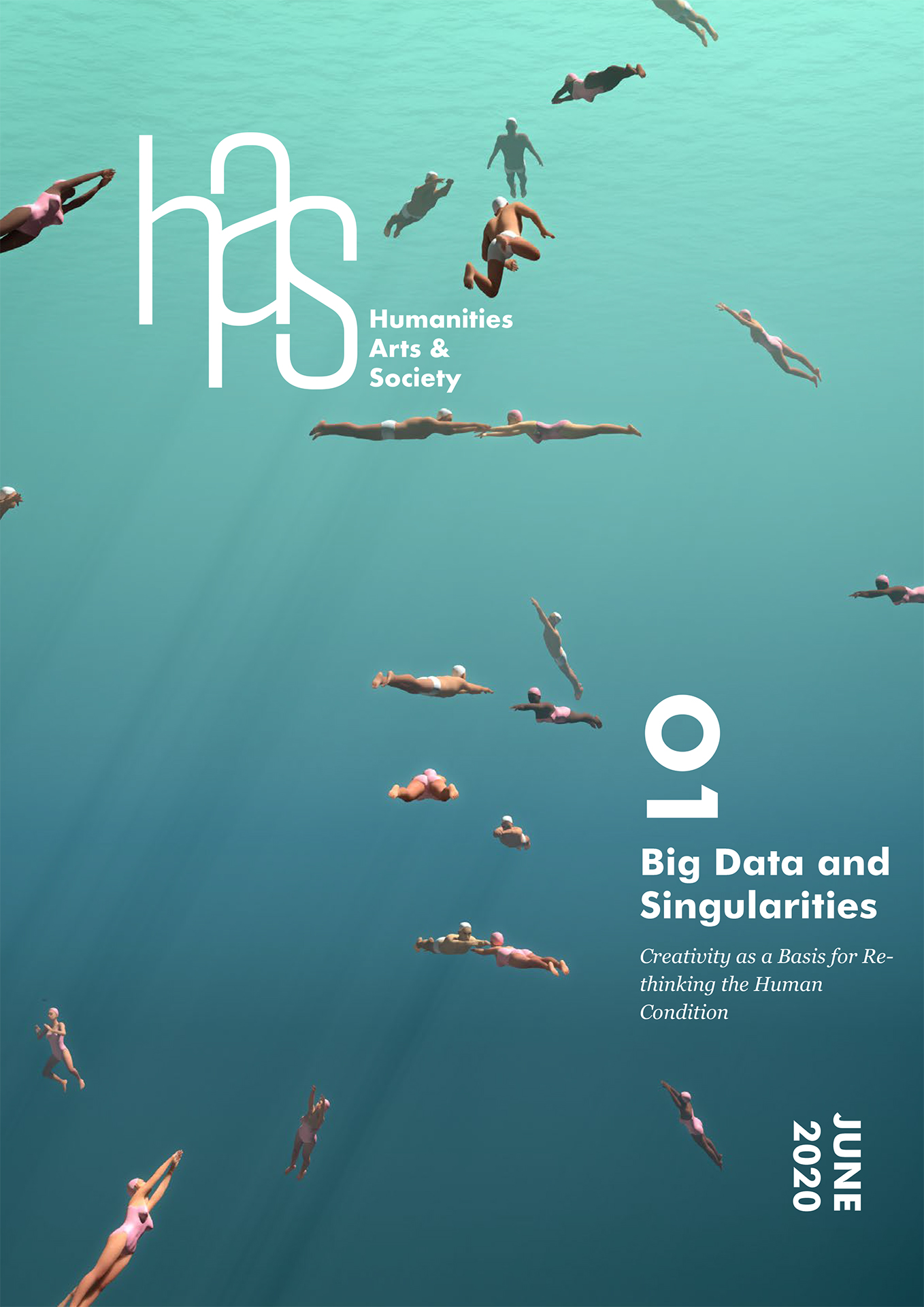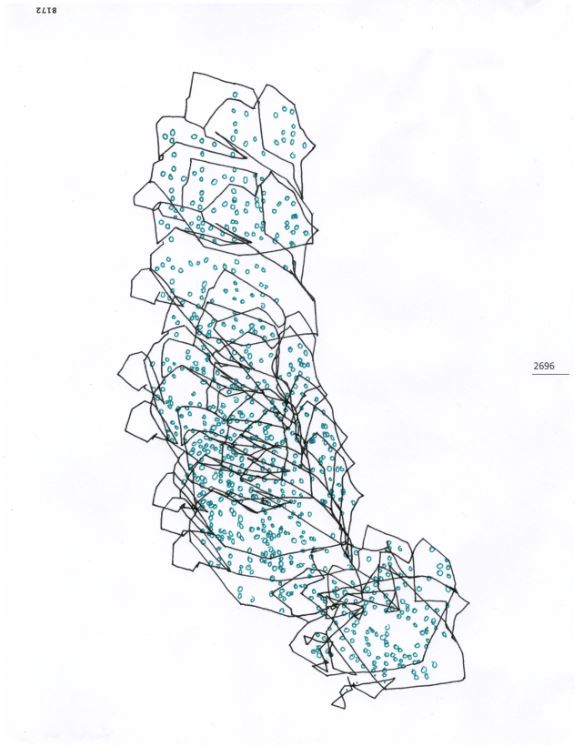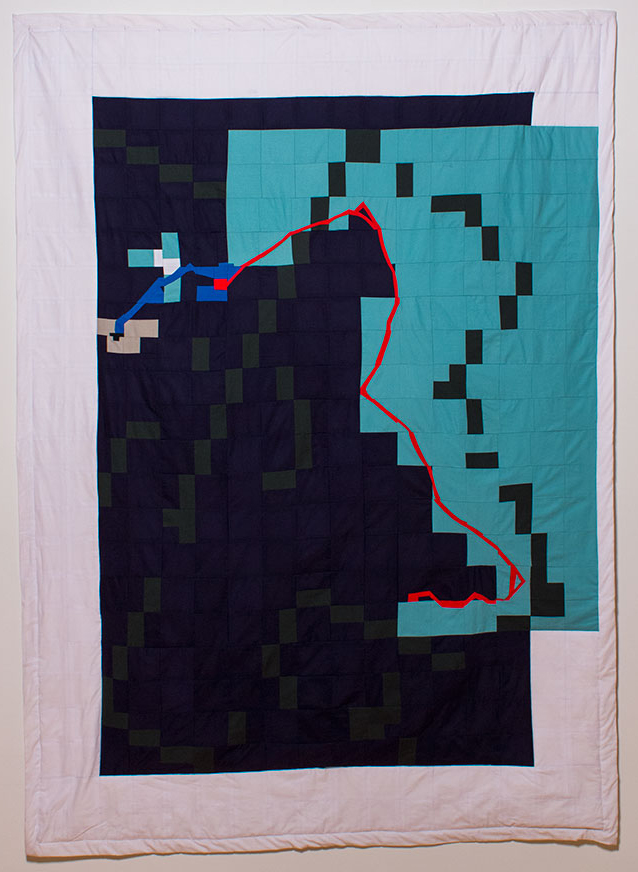Naomi B. Cook, artist’s statement:
I have spent my life to date developing survival skills that often seem like a process of decoding the world around me. My art practice is an expression of this process of decoding. All of my artistic projects start with research. They begin by looking at a large data set with the intention of creating a visual interaction that goes beyond aesthetic representation to allow for poetry. My projects have included topics like High-Frequency Trading, online dating apps, GPS coordinates and, more recently, environmental statistics. With each project I’ve learned new ways to reveal the embedded patterns within systems. This has been a process of developing a language, which evolves with each new topic and informs the previous works.
Magdalena Zborowski: You realized very early that you were an artist. Growing up in Canada of the ‘90s, at the beginning of the Computer Revolution, what was the first project you did working with data, and when was it?
Naomi Cook: In 2012, I was invited to participate in a residency at the Vermont Studio Centre, where I worked on a project translating a piano roll into imagery and then back into sound, using MIDI and a program I developed that read ink notations as sound. This was my first project working with technology and data, in this case a song—”Hesitation Blues.”
MZ: How was life in Canada regarding data protection at that time, compared to Europe or other countries? Do you think it would be different if you had grown up somewhere else?
NC: I can’t speak for other peoples’ experiences, but in my elementary school we were introduced to the Internet in third grade, through a Bell monitor and keyboard with a dial-up connection that we were invited to take home. I was paired with another student to monitor the server. We figured out how to open up the private chats of the other students, which got us into a lot of trouble, and which gave me a very clear sense of how ingrained surveillance is in these systems.
Data protection is a global issue that needs to be solved as a group effort, with all countries involved. The major corporations making decisions about what to do with our data and who has access to it are now more powerful than the countries they operate in.
MZ: Is living as a Canadian in Paris a different exploration of data and society, and the human condition?
NC: When I was working on the Troïka project, which deals with online dating apps and personal information, I was simultaneously working on the Monex project, which looks at financial data—for example, High-Frequency Trading. Interestingly, it was difficult to find an audience for the Monex project in France, and I got a far more positive response to the Troïka project. It was the complete opposite in North America. This seemed strange to me, as they both deal with the same issue—surveillance—but it was like people were saying “Oh no, we don’t talk about that,” but for very different reasons.
MZ: You are often combining many media in your works—drawings, videos, fabric, and others. What inspired you to do so?
NC: “Big Data” is a pretty abstract subject matter, and it involves large amounts of time-organizing information. Through this process, I look for ingrained patterns and a way to translate the data into something tangible. So when it comes to picking a medium, it is a matter of picking the right tool for the job.
MZ: Your project seems to interact with many subjects—philosophy, politics, mathematics, and nature. Is there a reason for this?
NC: My main topic is “Big Data,” which takes me in many different directions, and is not removed from the worst characteristics of human nature. I am interested in the systems that use data and how they function. I have found philosophy a useful tool to address difficult social, economic, and political questions that arise, and I often find myself returning to texts like Gilles Deleuze and Félix Guattari, and Franco “Bifo” Berardi.
MZ: You have chosen two images of significant works. What is the drawing and video BATS about?
NC: BATS_2012-03-23 was part of a project looking at financial data and the atomization of the financial markets. I used several sources, including the May 6th, 2010 Flash-Crash and the Mt. Gox bitcoin exchange disaster. BATS (Better Alternative Trading System) was created by Dave Cummings in Kansas, and is famous for moving a computer across from NASDAQ to get a faster connection. The company now claims to account for ten percent of all trades made in North America. The BATS exchange had made a disastrous attempt to create an IPO. The video is based on one of these early attempts, in which a computer glitch caused a quasi-instantaneous plummet of their IPO price, and subsequently crashed.
I was interested in how time operates in the stock market, often at speeds intangible to the human mind. I found myself slowing the information down to something that is understandable and within the human perspective. Doing this, patterns arose, and I was able to read the embedded information in the data. For the BATS_2012-03-23 video, the timeline of the crash was slowed to 300 times the actual speed—1.25 seconds—in a handdrawn, animated visualization of 4,560 drawings.
MZ: What did you learn from the trading project? How do you see the impact on our society? Does human science and the example of trading give us progress or regression, and how does it influence our cultural life?
NC: As I mentioned, the speeds at which algorithms operate in financial markets are not comprehensible to humans. Because of these speeds, this means an algorithm can be in multiple places within fractions of a second to verify prices and the activities on and off the market. This technological upper hand is a form of surveillance and power—a perfect allegory of the many systems and networks we interact with daily.
MZ: In your work Troïka from 2017, you are exploring and decoding a more private part of social life. Can you tell us a little bit more about this work?
NC: For the Troïka project, I was given, by users, data from various online dating platforms. From the beginning, I was interested in how the quantification of relationships through these platforms affects empowerment, particularly for women. The quilt titled “Troïka” was prompted by the 2015 user-information hack at Ashley Madison, a dating website specializing in extramarital affairs. After the user leak, one of the users, at my request, offered me detailed locational data of the last day of her affair. Stitched into the resulting quilt is the locational data, alongside a visualization of the emotional experience as described by the woman and the centre point of the affair.
MZ: What does the word troïka mean to you, and what is your reference to the meaning of “three” in this project?
NC: Troïka is a Russian word meaning a set of three, a cart pulled by three horses, or a traditional dance which brings together a woman and two men. Admittedly, I like to play with numbers in my projects in a superstitious way. Three as used in the Troïka project invites flexibility into the traditional definition of a union. I was looking for a parameter that reflected a modern definition of a relationship.
MZ: How do you see GPS within the context of privacy and liberty of human rights?
NC: GPS is another tool I often like to use in my projects. It takes a sophisticated infrastructure to aggregate and analyze. I have worked on projects where the limitations of GPS proved very one-sided. It is no secret that our devices using GPS are constantly tracking our location. The issue of liberty and human rights in this regard won’t begin to be solved until we are truly in control of our personal data and who has access to it.
MZ: Isn‘t using data aspects in art a kind of abuse of human rights, and an invasion of privacy as well?
NC: I try to be very cautious when it comes to private data. I have always asked for permission, and never made something public without consent. To be honest, people are very generous. For example, when I was collecting Tinder user data as part of the Troïka project, I thought it would be difficult to find people willing to give me their data, but it was quite the opposite.
MZ: Is “Big Data” changing our human condition and privacy, and how does it change and contribute to your art?
NC: As we have seen in the recent global elections, Brexit and Cambridge Analytica proved how powerful information is. In trading, this is called an algo-war, and obviously a select few have the tanks. When breaking down data sets, I have always looked for patterns. In the Monex project, I played a game with myself in which I would guess what the algorithm’s strategy was, and after rendering an object, I would confirm with financial analyst experts what had happened. Often I was aligned. Through my art projects, I have been trying to level the playing field.
MZ: “Big Data” obviously inspired you to creativity. How do you see its influence for future projects? Is there any future for “Big Data” in art, and how will it impact our culture?
NC: “Big Data” and its collection is not going anywhere anytime soon. This has created several troubling moral issues, and most of those in a position to address them have proven unwilling or unequipped to tackle it responsibly. Roger McNamee, an early investor in Facebook, Edward Snowden, and lots of other activists, point out the potential and actual disasters this has caused. How are we supposed to organize ourselves if the systems in which we do so are broken? I am a strong believer in the arts’ ability to highlight these issues and propose alternatives.
MZ: What kind of collaboration do you see with “Big Data”? Aren’t your works, at the end, also a kind of “Big Data” that could be used by somebody else for another creativity, and if so, where would you like to see it?
NC: Ha! I like that idea. I’m definitely an avid collector-to-be of future works based on my work!
MZ: Tell us what is your personal “re-thinking” of the human condition and singularity in your works?
NC: I can’t count how many times I have heard, “It is up to you as an artist to solve the pending reality that there will be no jobs and the robots will be running everything.” Maybe being a woman, the idea of losing my job to a “superior” identity is not a justifiable threat, and isn’t it amusing how we anthropomorphize AI? I am not afraid of the rise of a robot class. I am worried about the same actors manipulating these tools, including AI, algorithms, and data collection. When looking at the systems using these tools, I am interested in highlighting how power structures influence us, and yet I am still optimistic. Working towards an understanding, I believe we can solve these problems.
MZ: What will be your next “Big Data” exploration, and where can we discover it?
NC: Currently, I am building a new project centred around environmental statistics, specifically oil spill data dating from 1991 to the present. The project is called Rorschach Test, and includes sculpture from a material made from waste, drawings, photographs, and a video. A selection of the works will be exhibited at my gallery Christie Contemporary in Toronto in the fall of 2020.
Magdalena Zborowski is a curator, art critic and translator. Zborowski has a background in Art History, Italian and French literature. She worked at Galerie Karsten Greve in Cologne and Paris for 11 years, working at major art fairs, visiting collections, contributing to the organization and curating important exhibitions with international photographers, painters and sculptors.
Naomi Cook is an artist, living and working between Montreal and Paris. She studied Art and Philosophy at Concordia University, Montreal. Her technique stems from interest in engravings, sound, and visual representations of data. Her work has been featured in several group exhibitions in Montreal and abroad.
Magdalena Zborowski is a curator, art critic and translator. Zborowski has a background in Art History, Italian and French literature. She worked at Galerie Karsten Greve in Cologne and Paris for 11 years, working at major art fairs, visiting collections, contributing to the organization and curating important exhibitions with international photographers, painters and sculptors.
Naomi Cook is an artist, living and working between Montreal and Paris. She studied Art and Philosophy at Concordia University, Montreal. Her technique stems from interest in engravings, sound, and visual representations of data. Her work has been featured in several group exhibitions in Montreal and abroad.


